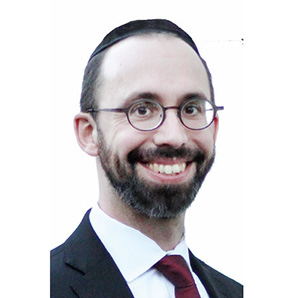
Everyone would love to be trained by the best experts, be it in school, college, work or yeshiva.
People pay top dollar and even intern for free to be trained by the best in their profession. Often that can mean the difference between success and failure in what we do.
After learning about Avraham Avinu, wouldn’t we want him to be our spiritual guide and anchor as we attempt to grow in our closeness to Hashem? The truth is…we can. Looking at a mishnah in Pirkei Avos, we discover how. “Whoever has the following three traits is among the disciples of our forefather Avraham … a good eye, a humble spirit and a meek soul.” (5:22)
There’s a flipside to the mishnah: “Those who have an evil eye, an arrogant spirit and a greedy soul are among the disciples of the wicked Bilaam.” Apparently, the time gap is not an issue and we can join the “academy” of either Avraham Avinu or Bilaam, learning from the qualities of either individual. The parshiyos of Lech Lecha, Vayera and Chayei Sarah are replete with lessons we learn from Avraham. Conversely, Parshas Balak is replete with negative lessons that can be learned from Bilaam!
Why are Avraham and Bilaam singled out? What’s the common denominator of the three positive qualities of Avraham and the three negative qualities of Bilaam?
The Maharal explains that both Avraham and Bilaam were founding fathers. Avraham is an acronym for “av hamon goyim,” a father of a multitude of nations (Rashi, Lech Lecha 17:5). Bilaam was also a leader and father of nations. He was the first gentile prophet. However, their ideologies and lifestyles were polar opposites. They represented a distinct fork in the road for a person choosing his direction in life.
The Maharal opens our eyes to the root of the ideologies of these “founding fathers” by examining a seemingly inconsequential detail about both Avraham and Bilaam. The Torah mentions that Avraham and Bilaam rode on a donkey. However, different Hebrew words for donkey are used in each case. Avraham saddled his chamor—male donkey, while Bilaam saddled his ason—she-donkey. This small difference highlights the basic difference in their ideologies. The root of the word chamor is the same as the root of chomer—physical matter/physicality. The donkey in effect represents physicality.
The Torah is depicting a very fundamental difference in how Avraham and Bilaam related to the physicality of the world. Avraham rochev al hachomer; he rode on top of the physical. He showed an ability to harness the physical world as a tool for spiritual growth. Conversely, Bilaam related totally to the physicality of this world, in a very intimate, very attached and deeply connected manner. He even harnessed the spiritual to feed his desire for the physical.
Keeping in mind the Maharal’s analysis, having a “good eye” means using one’s efforts to help others and to be humble and content, instead of seeking to please oneself. To Avraham, that meant setting up a free “bed and breakfast,” housing and feeding all passersby and using that opportunity to nourish their neshamos (souls) as he introduced them to the realization that Hashem is really the One who blessed them with food and housing.
Bilaam was the paradigm of selfishness. His three motivating qualities—evil eye, arrogant spirit and greedy soul, are manifestations of the three base negative urges: jealousy, lust and the pursuit of honor. Bilaam always felt he was missing something and always sought to feed his desires. This exemplifies someone who is interwoven with the physical. He always feels he is lacking and wants more.
We see the end result of their divergent paths when the Torah describes Avraham and Bilaam toward the end of their lives. Avraham died at a good old age, mature and content, and left this world with a multitude of positive accomplishments. Conversely, “Bilaam rose and returned to his place,” lame, blind in one eye and disgraced as a result of his total failure to accomplish anything positive.
The lesson for us is clear. Many people would love their children to attend their alma mater, be it yeshiva or university. The Mishnah, however, lists only two academies, Avraham or Bilaam. Our perspective toward the physical world will determine of whom we are disciples and which academy we are attending and learning from. Let us adopt the warm and giving personality of Avraham and utilize our efforts for true tikun olam—using the physical world for the spiritual development of ourselves and our fellow man. May we merit to be not just children of Avraham, but his disciples as well.
By Rabbi Baruch Bodenheim
Rabbi Baruch Bodenheim is the associate rosh yeshiva of Passaic Torah Institute (PTI)/Yeshiva Ner Boruch. PTI has attracted people from all over northern New Jersey, including Teaneck, Paramus, Rockaway and Fair Lawn. He initiated and continues to lead a multi-level Gemara-learning program. Recently he has spread out beyond PTI to begin a weekly beis midrash program with in-depth chavrusa learning in Livingston, Springfield and Fort Lee. This year he joined Yeshiva Heichal Hatorah as a Gemara iyun rebbe. His email is rb@ptiweb.org.










